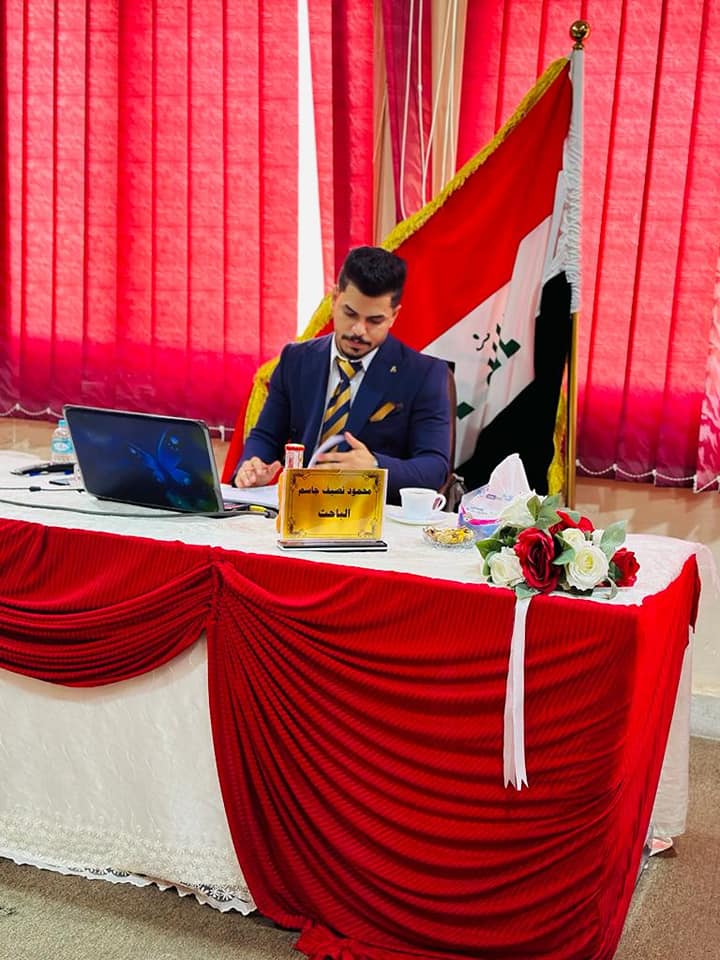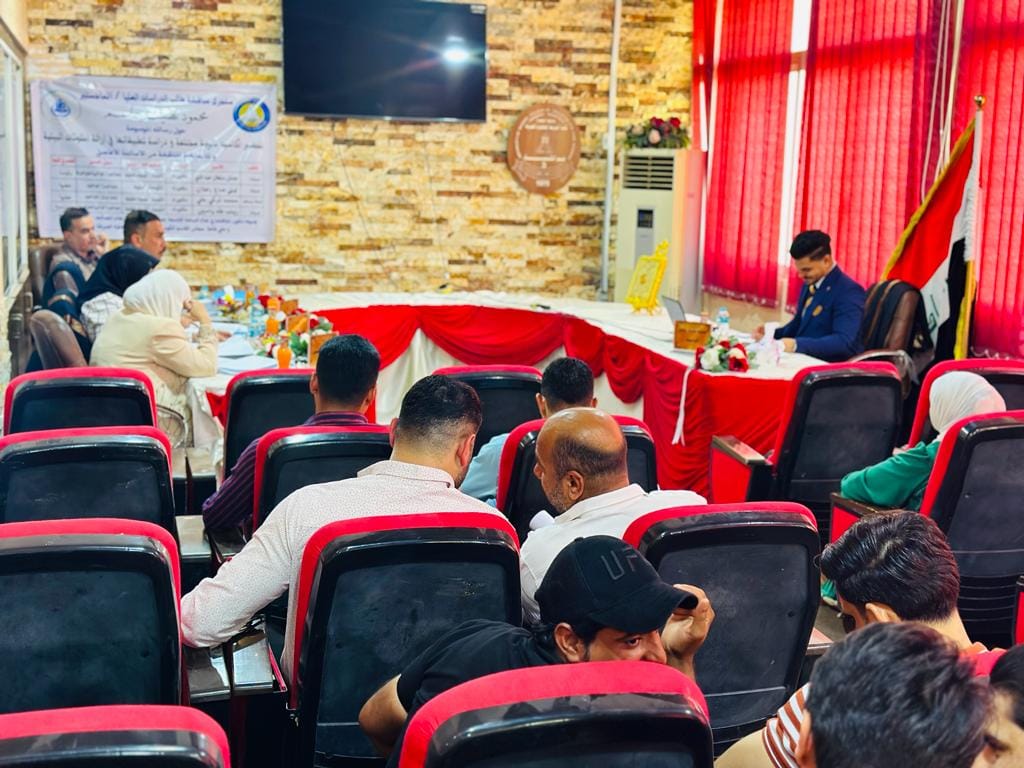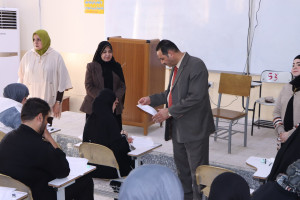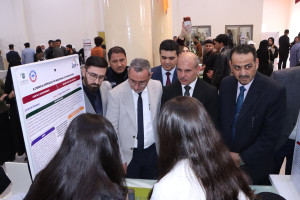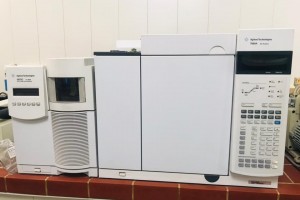
The College of Education for Pure Sciences, Department of Chemistry, University of Basrah, discussed a master's thesis on the preparation of different nano-oxides and the study of their applications in removing environmental pollutants
The thesis presented by the researcher (Mahmoud Nassif Jassim) included
In this study, nanoparticles were prepared for three metallic metals, which included zinc, copper and silver, using the wet method (oxidation-reduction). Green chemistry was also used by choosing basil leaf extract as a reducing and anti-caking agent.
The study dealt with the preparation of zinc oxide nanoparticles, copper oxide nanoparticles, and silver oxide nanoparticles. The microstructure of the nanoparticles was studied using the scanning electron microscope (SEM), as well as the study of microelemental analysis using (EDX) technology, and the study of plasmon resonance (SPR) spectrometry using the visible-ultraviolet spectrometer. Also, the zeta size and potential were studied using dynamic optical scattering (DLS) technique for all the prepared nanoparticles. For the first time, an automatic reactor equipped with a peristaltic pump was used to break down the methylene blue dye, where the contaminant and the nanomaterials used for the photocracking reaction were withdrawn at the same time, and the percentage of dye breakage was measured at fixed time intervals.
For zinc oxide nanoparticles, the scanning electron microscope showed that the average particle size radius was (44-72) nm, and the microelemental analysis ratios for them were equal to (31.8%). -) millivolts and the particle size is less than 100 nm. The application of particles in the removal of water pollutants was studied, and the bile blue dye was chosen as a model (pollutant). It was broken by light using an LED lamp in the presence of the prepared nanoparticles. The cracking was done in two ways: the traditional method and the automatic method. peristaltic pump
As for the prepared copper oxide nanoparticles, the scanning electron microscope showed that the average size radius of the copper nanoparticles was (33-76) nanometers, and the proportions of microelemental analysis were (31.8%). The plasmon spectrum showed a peak for copper nanoparticles at (512) nm and its zeta potential value is (-7.69 mV) and the particle size is 84.23 nm. The crushing percentages of the dye were 44% using the traditional method and 45.4% using the automatic method using the peristaltic pump.
As for the prepared silver oxide nanoparticles, the scanning electron microscope showed that the average radius of the particle size was (24-66) nm, and the proportions of the accurate elemental analysis were equal to (31.8%), and the plasmon spectrum showed a peak for the silver oxide nanoparticles at (417) nm and a value of The zeta potential is (-12 mV) and the particle size is 23.05 nm. Where it was broken by light using an LED lamp, and it was broken by two methods, the traditional method and the automatic method, and the percentage of cracking of the dye was 42% by the traditional method and by 45.4% by the automatic method using the peristaltic pump.
